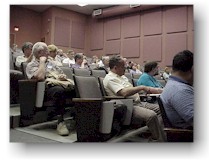Our next speaker is Gideon Bass and he will be speaking on Kepler Studies of Low-Mass Eclipsing
Summary of Upcoming Lecture
January’s Full Moon is the “Old Moon”, “Wolf Moon”, “Ice Moon”, “Moon after Yule”, or “Paush Poornima”
February’s Full Moon is the “Snow Moon”, “Hunger Moon”, “Storm Moon”, “Candles Moon” or “Magh Poornima”
Our next speaker is Andrea Jones and she will be speaking on Mars Exploration Missions and Future
March’s Full Moon is the “Lenten Moon”, “Worm Moon”, “Crow Moon”, “Crust Moon”, “Sugar Moon”, “Sap Moon”, “Chaste Moon”, or “Holi”.
Guest Speaker: Dr. Gianluca Masi
Next 14 April, starting at 23:15 UT, the Northern Virginia Astronomy Club (NOVAC) will offer you a unique chance to explore cosmic landscapes from the comfort of your chair.
Thanks to a joint collaboration between NOVAC and the Virtual Telescope Project (VT)in Italy (www.virtualtelescope.eu), a powerful telescope in Italy will be capturing in real time images of the most beautiful cosmic gems and will share the view with all those connected from all around the planet.
All this with the live commentary of the astrophysicist Gianluca Masi, PhD, founder and scientific director of the Virtual Telescope Project, who will be available on the event chat for questions and comments.
We will surf the northern Spring skies, spying beautiful, distant galaxies like Messier 51, Messier 100, NGC 4565 and so on, also spying dying stars, exploding supernovae millions and millions of light years away. On our way back home, we will visit planet Saturn and its elegant, amazing rings. Of course, participants can suggest their own preferred destinations via chat, adding interactivity to the trip.
NOVAC and VT will open the online event to all, for free: to join, you just need to access, at the event date and time, the page:www.astrowebtv.org
In case of cloudy weather at the observatory, backup images will be used.
This event is part of the Global Astronomy Month 2013.


